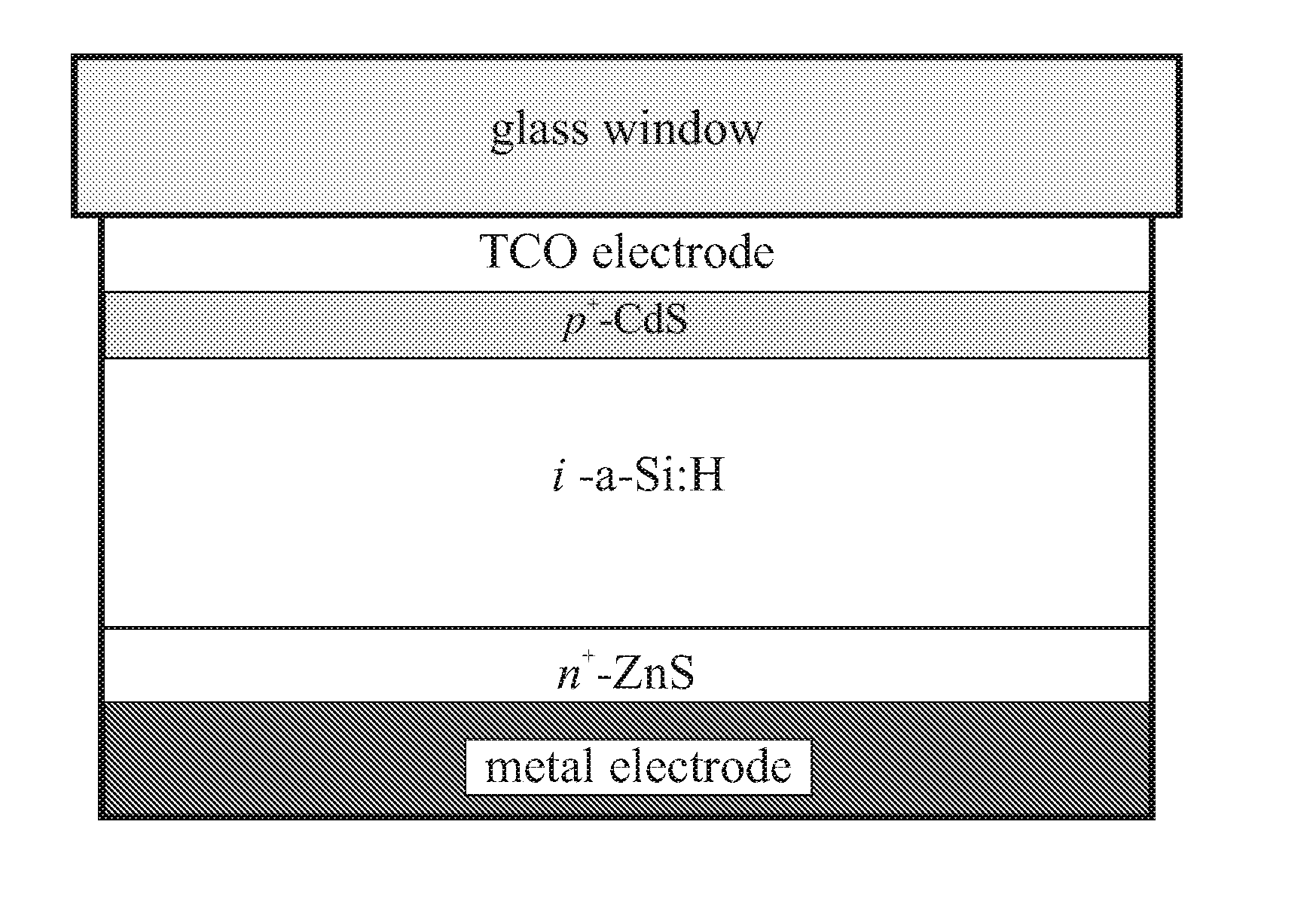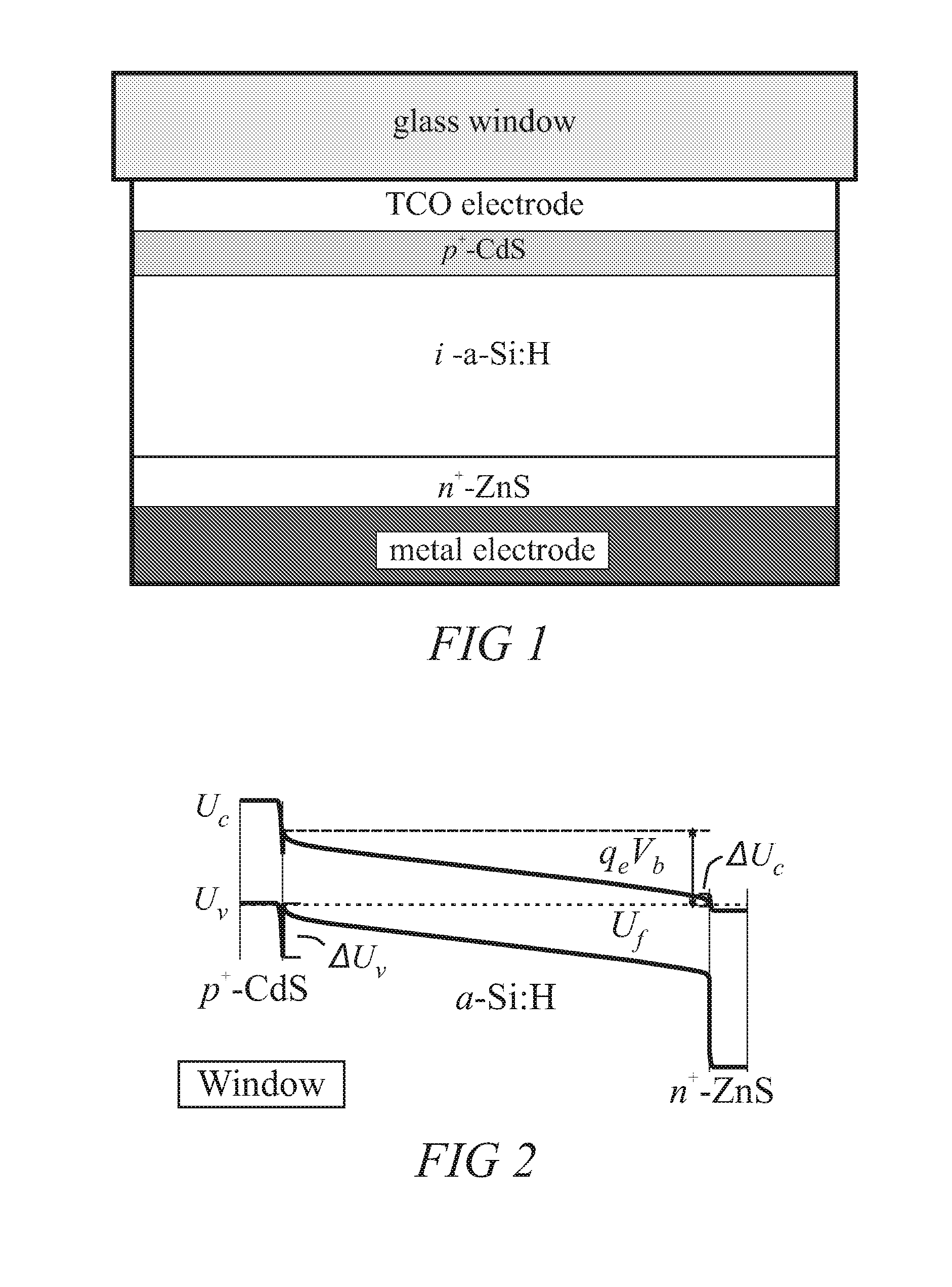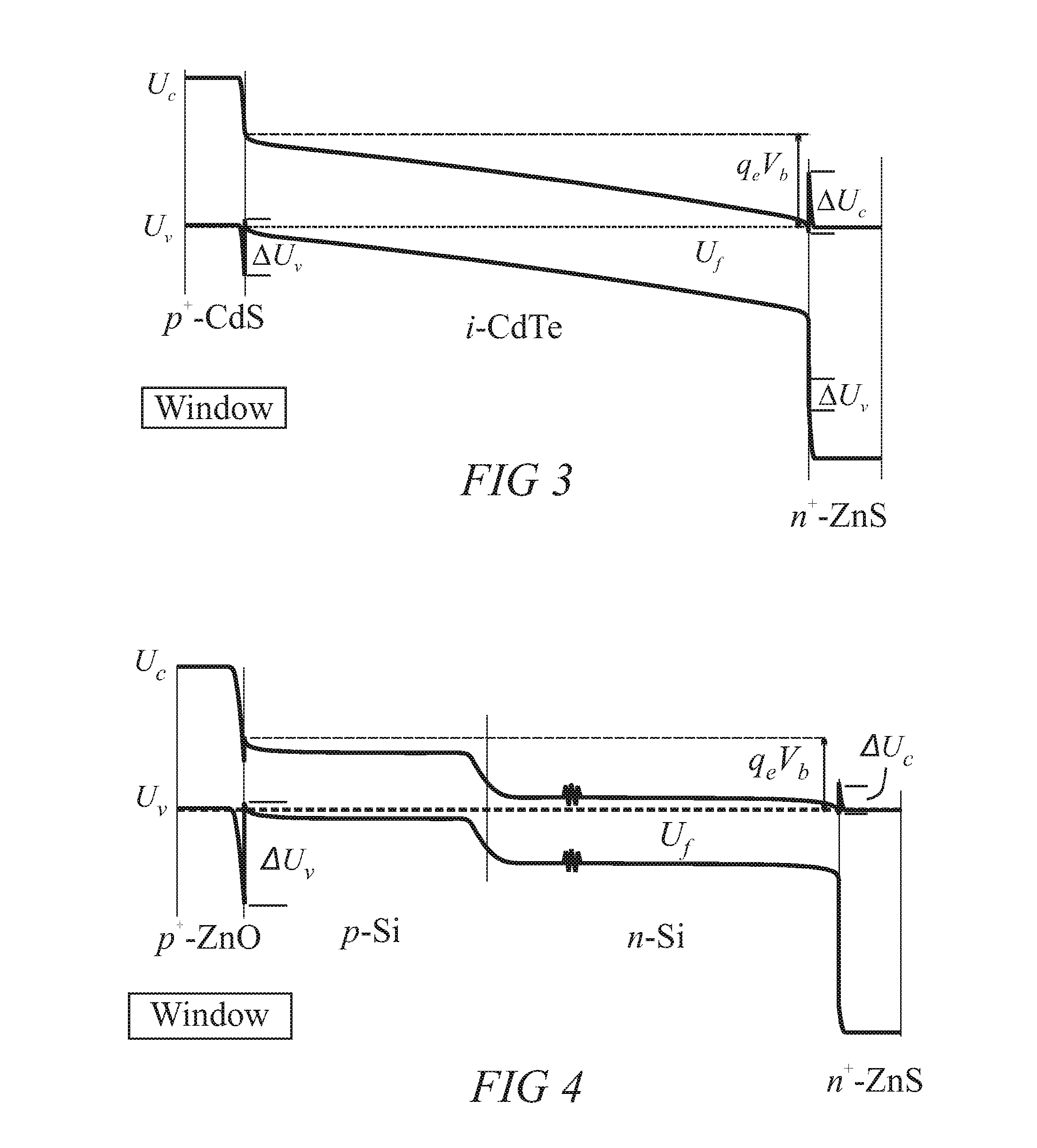Photoelectric Cells Utilizing Accumulation Barriers For Charge Transport
a photoelectric cell and charge transport technology, applied in the field of photovoltaic devices, can solve the problems of excess potential and charge accumulation on the absorber side of the interface, and achieve the effects of reducing the depletion potential, increasing temperature, and reducing the loss of internal field strength
- Summary
- Abstract
- Description
- Claims
- Application Information
AI Technical Summary
Benefits of technology
Problems solved by technology
Method used
Image
Examples
example 1
Amorphous Silicon Hydride (a-Si:H) Absorber
[0022] A schematic representation of one embodiment of the invention in which the absorber is amorphous silicon is shown in FIG. 1. The cell's photoactive region may be described as a modified p-i-n junction. A p-i-n (or n-i-p) junction consists of an extended junction, formed by placing an intrinsic (i) semiconductor layer between p- and n-layers of the same or similar semiconductors. The potential drop across the intrinsic layer is equal to the difference between the work function in the p- and n-layers. In the ideal case, the intrinsic layer contains relatively little space charge. Where this is true, the electric field strength is nearly uniform through the bulk absorber layer and varies inversely with the thickness of the i-layer. The p-i-n junction is usually found in solar cells in which the absorber is a-Si:H.
[0023] The modified p-i-n cell illustrated in FIG. 1 uses intrinsic a-Si:H (i-a-Si:H) as the active absorber. The i-a-Si:H ...
example 2
Cadmium Telluride (CdTe) Absorber
[0029]FIG. 3 illustrates, in the form of an equilibrium band diagram, the relevant sections of a P+-i-N+ solar cell that uses intrinsic CdTe as the active absorber. The cell makes use of p+-CdS and n+-ZnS as the contacts for hole and electron carrier collection, respectively. This junction has the same preferred features as illustrated in the a-Si:H cell, including carrier band offsets “ΔUv and ΔUc”, Fermi levels located within the WGS band edges and crossing through the band edges of i-CdTe at each interface. Most significantly, the cell of FIG. 3 should exhibit a larger built-in potential and lower recombination rates when compared to conventional CdTe cells, leading to an overall better photoelectric conversion efficiency.
[0030] The semiconductor arrangement illustrated in FIG. 3 is in contrast to prior art designs for CdTe solar cells, where conventionally p-CdTe is contacted at the front-side with n-CdS and at the rear with p-ZnTe (as describe...
example 3
Crystalline Silicon Absorber
[0031]FIG. 4 is an equilibrium band diagram illustration of the relevant sections of a solar cell using lightly doped, crystalline silicon as the active absorber. The cell uses p+-ZnO (U.S. Pat. No. 6,908,782 “High carrier concentration p-type transparent conducting oxide films”) and n+-ZnS WGS contacts as the hole and electron carrier collectors, respectively. This junction again incorporates carrier band offsets “ΔUv and ΔUc” at each contact interface and may be symbolized as “P+-p-n-N+”. In contrast to the examples given above, the active absorber contains regions where the equilibrium carrier concentrations are both depleted (across the Si p-n junction) and accumulated (at the two contacts). In solar cell applications, crystalline silicon is typically made at least 50 microns thick to give near complete absorption of sunlight. Because of this, the total silicon thickness is not shown to scale in the figure in an attempt to better illustrate the featu...
PUM
 Login to View More
Login to View More Abstract
Description
Claims
Application Information
 Login to View More
Login to View More - R&D
- Intellectual Property
- Life Sciences
- Materials
- Tech Scout
- Unparalleled Data Quality
- Higher Quality Content
- 60% Fewer Hallucinations
Browse by: Latest US Patents, China's latest patents, Technical Efficacy Thesaurus, Application Domain, Technology Topic, Popular Technical Reports.
© 2025 PatSnap. All rights reserved.Legal|Privacy policy|Modern Slavery Act Transparency Statement|Sitemap|About US| Contact US: help@patsnap.com



